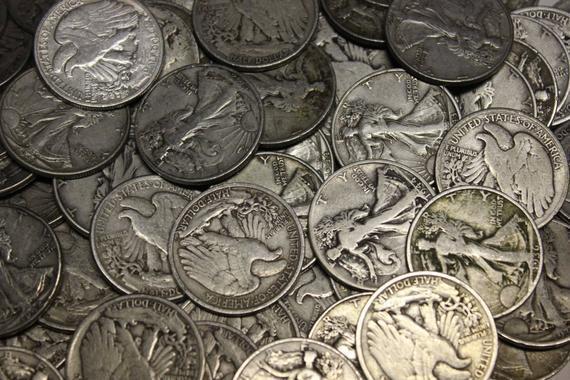Pre-1965 silver coins hold a unique position in numismatics and precious metal investing. Known for their historical significance and intrinsic value, these coins are sought after by collectors and investors. This article explores what Pre-1965 silver coins are, the concept of debasement, the effects of the 1965 coinage changes, and how the spot price of silver impacts these coins’ intrinsic value.
Pre-1965 silver coins containing significant amounts of silver were issued by the U.S. Mint before the composition change in 1965. These coins include Mercury Dimes, Washington Quarters, and Walking Liberty Half Dollars minted with 90% silver.
Over time, the value of these coins has appreciated not only for their collectible aspect but also for their silver content. Many investors view these coins as a hedge against inflation and a store of wealth, making them a popular choice for those looking to diversify their investment portfolios.
1965 Debasement
Debasement is reducing the precious metal content in coins while maintaining their face value. This practice results in less valuable coins in terms of their metal content, even though they circulate with the same nominal value.
Historically, governments have used debasement to stretch the availability of precious metals, often as a response to economic pressures or to facilitate increased monetary supply.
In the context of U.S. coinage, debasement occurred in 1965 when the Coinage Act was passed. This act replaced the silver content in dimes and quarters with a copper-nickel alloy. Half-dollars also saw a reduction in silver content from 90% to 40% before eventually transitioning to copper-nickel.
The 1965 debasement of coins had several implications for the economy and numismatics. With reduced silver content, newly minted coins lost their intrinsic value.
The change led to public skepticism regarding the currency’s stability, as citizens knew that the coins they held were worth less in terms of raw materials.
For numismatists, the debasement marked the end of an era of coins prized for their metal content. The shift necessitated a reevaluation of which coins were considered valuable.

These changes required adjustments in both collecting and investing strategies as coins’ intrinsic value became separated from their utilitarian purpose.
Pre-1965 Silver Coins Value
The spot price of silver plays a crucial role in determining the intrinsic value of Pre-1965 silver coins. Since these coins contain 90% silver, their worth is directly influenced by fluctuations in silver prices. Here’s how the spot price affects their value:
The intrinsic value of a silver coin is calculated based on its silver content and the current spot price of silver. For example, a pre-1965 quarter contains approximately 0.1808 troy ounces of silver. If the silver spot price is $25 per ounce, the coin’s intrinsic value is about $4.52.
As the spot price of silver increases, the demand for Pre-1965 silver coins often grows as investors seek to capitalize on rising metal prices.
These coins are perceived as a hedge against inflation, as their value tends to rise with increasing silver prices, preserving purchasing power over time.
Investors should regularly monitor the silver spot price and consider market trends when buying or selling Pre-1965 silver coins to maximize returns.
Conclusion
Due to their historical significance and silver content, pre-1965 silver coins remain valuable assets for collectors and investors. Understanding the impact of debasement and the role of silver spot prices in determining their value is crucial for making informed decisions. As economic conditions and market dynamics evolve, these coins offer a tangible connection to the past and a potential safeguard for future financial stability.
